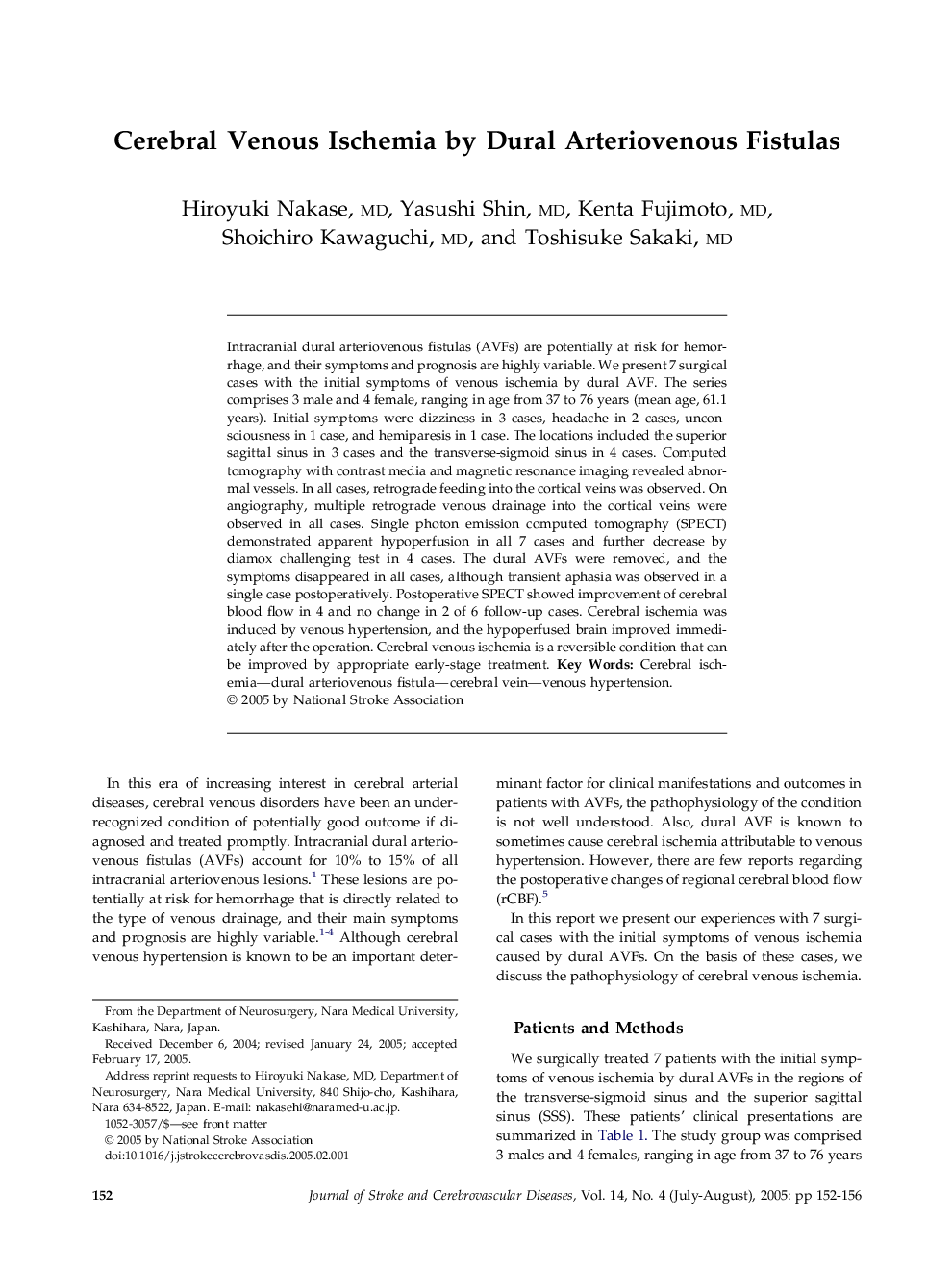| Article ID | Journal | Published Year | Pages | File Type |
|---|---|---|---|---|
| 9076943 | Journal of Stroke and Cerebrovascular Diseases | 2005 | 5 Pages |
Abstract
Intracranial dural arteriovenous fistulas (AVFs) are potentially at risk for hemorrhage, and their symptoms and prognosis are highly variable. We present 7 surgical cases with the initial symptoms of venous ischemia by dural AVF. The series comprises 3 male and 4 female, ranging in age from 37 to 76 years (mean age, 61.1 years). Initial symptoms were dizziness in 3 cases, headache in 2 cases, unconsciousness in 1 case, and hemiparesis in 1 case. The locations included the superior sagittal sinus in 3 cases and the transverse-sigmoid sinus in 4 cases. Computed tomography with contrast media and magnetic resonance imaging revealed abnormal vessels. In all cases, retrograde feeding into the cortical veins was observed. On angiography, multiple retrograde venous drainage into the cortical veins were observed in all cases. Single photon emission computed tomography (SPECT) demonstrated apparent hypoperfusion in all 7 cases and further decrease by diamox challenging test in 4 cases. The dural AVFs were removed, and the symptoms disappeared in all cases, although transient aphasia was observed in a single case postoperatively. Postoperative SPECT showed improvement of cerebral blood flow in 4 and no change in 2 of 6 follow-up cases. Cerebral ischemia was induced by venous hypertension, and the hypoperfused brain improved immediately after the operation. Cerebral venous ischemia is a reversible condition that can be improved by appropriate early-stage treatment.
Related Topics
Health Sciences
Medicine and Dentistry
Clinical Neurology
Authors
Hiroyuki MD, Yasushi MD, Kenta MD, Shoichiro MD, Toshisuke MD,
